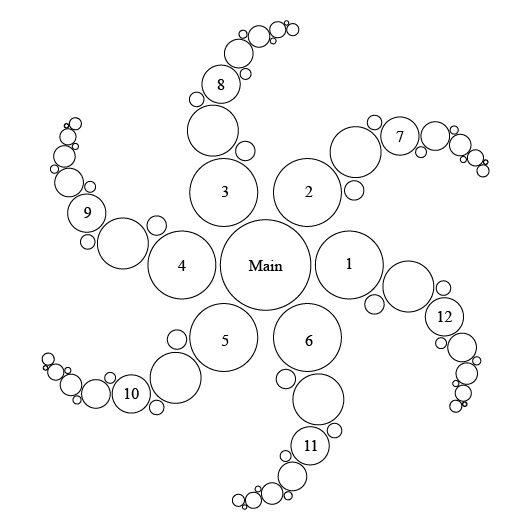
Sean R. answered • 07/24/23
Experienced MCAT, Physio, Bio., Chem, Stats, & Math Tutor from UCLA
a. Consider circles 1 through 6. If these circles are equally spaced around the main circle, and circle 1 is at 0°, what is the direction (in degrees) of each of these circles in relation to the main circle?
Unit circles give us the full circumference of a circle representing 360-degrees or 2(pi) radians. If circle 1 is 0-degrees, then it also represents the position at 360-degrees. Circle 4 on the exact opposite side would be 180-degrees from which 0 --> 180 degrees form a straight line. The way to equally divy up the remaining circles 2 and 3 would be to move by 60-degrees each step. Thus, 1: 0-degrees; 2: 60-degrees; 3: 120-degrees; 4: 180-degrees; 5: 240-degrees; 6: 300-degrees; back to 1 which is 0- or 360 degrees.


Sean R.
d. After creating the design, the designers want to inspect their work. They start at 0° and walk all the way around the design almost two times and stop at circle 12. How many radians did they cover during their inspection? 2pi + 11pi/6 = 12pi/6 + 11pi/6 = ~ 23pi/607/24/23
Sanjana M.
Please explain question C,D,E07/24/23






Sean R.
b. Consider circles 7 through 12. If circle 7 is at 45°, what is the radian measure of each of these circles in relation to the main circle? Explain how you know these values. As you know, the unit circle depicts degrees or radians up to 2(pi). Thus, circle 7 at 45-degrees is pi/4 because dividing up the circle into its relative components leaves 90-degrees in each quadrant, with 30, 60, and 90-degrees representing specific intervals moving counterclockwise around the unit circle. 8 looks correlated with 2pi/3. 9 looks correlated with 5pi/6. 10: 7pi/6 11: 5pi/3 12: looksl ike 11pi/6.07/24/23